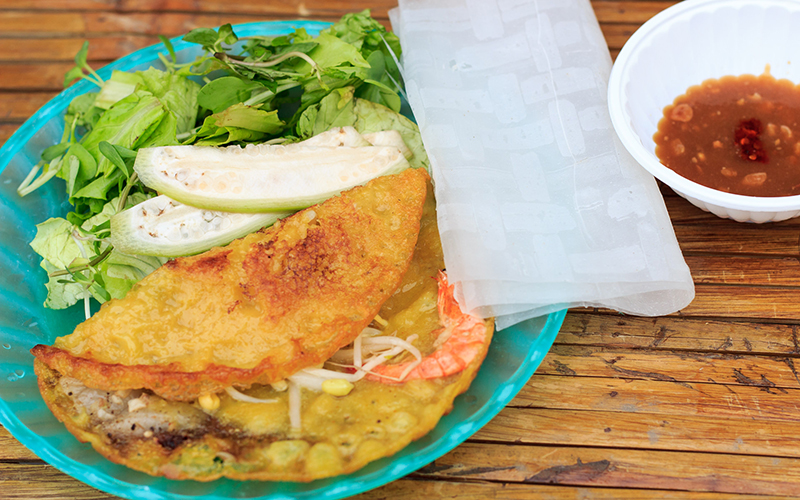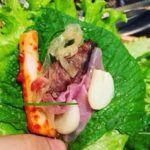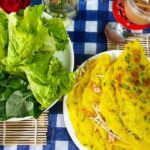The mention of Vietnamese pancake or ‘banh xeo’ evokes a sense of rustic charm, a testament to the simplicity and humility of Vietnamese culture. This beloved dish has long been renowned for its delicious flavor and unique preparation, particularly in the southern and central regions of the country. While the exterior may appear similar, the ingredients and cooking methods differ significantly between the two regions. Let’s delve into these distinctions and explore the art of making the perfect ‘banh xeo’ through today’s article!
1. Ingredients for ‘Banh Xeo’
‘Banh Xeo’ in Central Vietnam:
The key components of the batter for this version include pure rice flour and a touch of turmeric powder, infused with the aromatic and rich flavor of coconut milk.
The filling consists of fresh seafood such as shrimp and squid, capturing the essence of the sea and satisfying the palate.
 Ingredients for ‘Banh Xeo’
Ingredients for ‘Banh Xeo’
‘Banh Xeo’ in Southern Vietnam:
In contrast, the southern variation utilizes a pre-mixed batter, eliminating the need for additional ingredients and simplifying the process. Chopped scallions can be added for a pop of color and enhanced flavor.
While the specific ingredients may vary across different areas in the south, the staple fillings typically include shrimp, lean pork, mung beans, and bean sprouts.

2. Cooking Method
‘Banh Xeo’ in Central Vietnam:

A unique characteristic of central Vietnam’s ‘banh xeo’ is the use of a small, sturdy cast iron pan specifically designed for this dish, resulting in a pancake with a diameter of approximately 15-19 cm.
Prior to cooking, a generous amount of oil is added to ensure a crisp texture and quick cooking time.
The standout feature of this regional variation is the inclusion of large shrimp or sliced squid rings within the filling, accompanied by bean sprouts to balance the richness of the dish.
‘Banh Xeo’ in Southern Vietnam:

In contrast to the central region, southern Vietnam’s ‘banh xeo’ is characterized by its large size and the use of a large pan for cooking.
A thin coating of oil or lard is applied to the pan before pouring in the batter, creating a delicate, thin pancake.
The southern version has a crispy outer edge, while the interior remains soft and slightly chewy. It is best enjoyed fresh out of the pan while still hot.
The generous filling includes lean pork, fresh shrimp, mung beans, bean sprouts, scallions, and other ingredients, making it a satisfying and hearty dish.
3. Accompaniments
‘Banh Xeo’ in Central Vietnam:

In addition to the ubiquitous sweet and sour fish sauce, central Vietnam’s ‘banh xeo’ is traditionally served with a unique peanut-based ‘mam nem’ sauce, adding a layer of richness and depth of flavor.
The combination of this savory sauce, fresh greens such as mustard greens, lettuce, fish mint, perilla, and basil, and rice paper wrappers creates a burst of flavors and textures.
‘Banh Xeo’ in Southern Vietnam:

In southern Vietnam, ‘banh xeo’ is typically accompanied by a sweet and sour fish sauce, sometimes enhanced with shredded carrots, and served with a variety of fresh herbs.
Now you know the distinct differences between central and southern Vietnam’s ‘banh xeo’. Though they vary in ingredients and preparation, they are both delicious representations of Vietnamese cuisine.



































